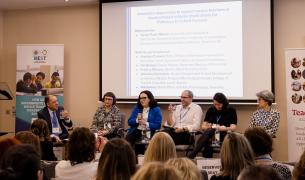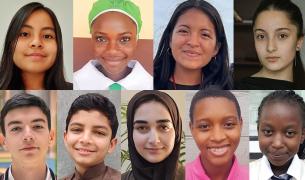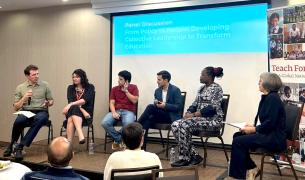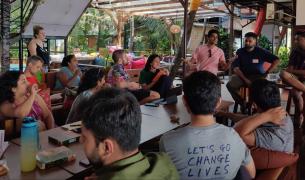Teach For Cambodia Partners with Teach For Australia Alumni Initiative Maths Pathway
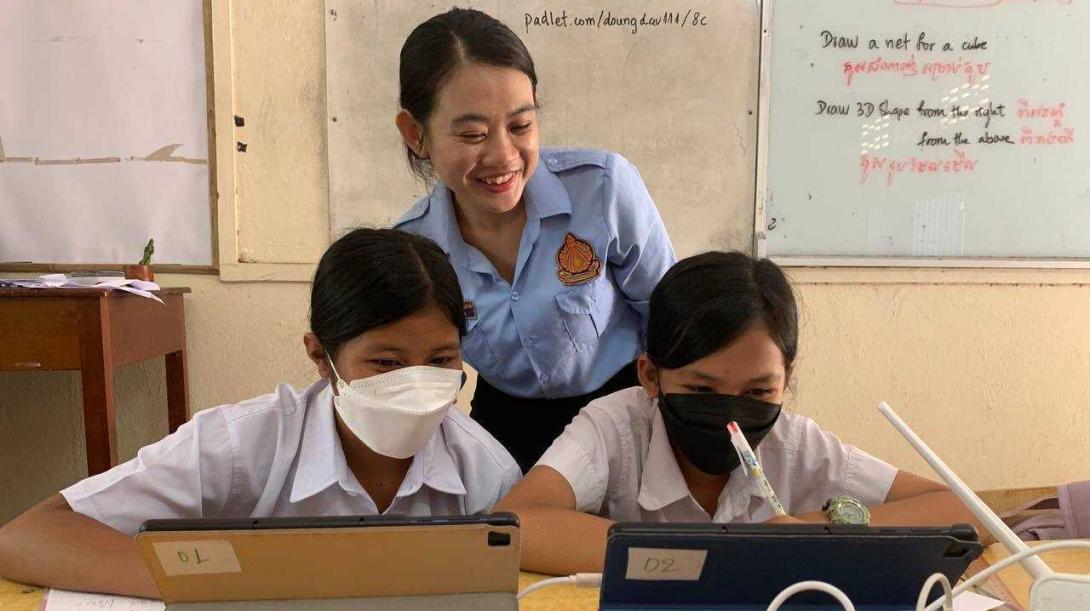
Angel Lin, Teach For All's Regional Portfolio Manager - Asia Pacific, had the opportunity to sit down with Teach For Cambodia's CEO Monirath Siv and Teach For Australia alumnus and Co-Founder of Maths Pathway Richard Wilson to learn about Maths Pathway’s successful pilot collaboration with Teach For Cambodia, which is flipping mathematics classrooms and improving outcomes for students in Cambodia. The following is an excerpt of their discussion:
Angel Lin: Maths Pathway is a social enterprise organization based in Australia, co-founded by Teach For Australia alumni Richard Wilson and Justin Matthys. This year, we’ve seen a successful pilot project between Maths Pathway and Teach For Cambodia. What prompted you to start this partnership with Maths Pathway, Moni, and what problem were you trying to solve?
Monirath Siv: We are seeing an emerging problem of teacher burnout especially during and post-COVID19, which impacts how teachers see their effectiveness. Between managing students and a heavy administrative workload, teachers do not have enough time to focus on students. In Cambodia, on average, one teacher teaches up to 60 students per class, and they have three to five classes to teach. I started thinking about the power of technology and what we can do to support teachers, in terms of reducing their workload and empowering them to focus more on teaching. It needs to be something that is futuristic, as we cannot afford to go back. I started looking in Cambodia and in the broader Asian region, but I just couldn’t find the right partner. I then reached out to Wendy Kopp (Co-founder and CEO of Teach For All), and she introduced me to Richard.
Angel Lin: Richard, Maths Pathway has been a very successful social enterprise in Australia, reaching 85,000 students across hundreds of schools. Why did you start looking beyond Australia, and why did you choose Teach For Cambodia as your first international partner?
Richard Wilson: Our journey domestically has always focused on the quality of learning outcomes. It’s always about how we can deliver effective maths education where students understand what they’re doing, while at the same time reducing anxiety around maths learning, and allowing them to apply maths skills in school and eventually for the rest of their lives. We’d honed our approach in Australia, but over the last couple of years, especially during the pandemic, we saw that so many students around the world faced the same obstacles to learning. Alongside literacy, mathematics is foundational for all other learning. But children get terrified of maths, just like a lot of adults who are scared of numbers.
We then started looking at ways we could expand our impact beyond borders. In fact, it was perfect timing when Wendy introduced Moni and me. In the first Zoom call that we had, Moni shared about the education system in Cambodia, its values, and what their needs are. It became so obvious that this could be the right solution for what Moni was looking for, the only question was: how do we bring Maths Pathway to Cambodia? For Maths Pathway and Teach For Cambodia, it was a sense of shared vision, shared alignment of our values, and being part of the Teach For All network—that we want all children to learn, and to learn really well—that really became the driving force behind this collaboration.
Monirath Siv: When I first heard about Maths Pathway, I wasn’t at all aware that it was a “high-touch” platform—meaning a tech platform that deeply involves teachers, rather than one which seeks to replace them. When looking for the right partner, that was my primary concern—it was important to me that teachers could adopt the platform and that it would enhance their work. Once we understood the platform, we knew that Maths Pathway was the right partner that we were looking for.
Richard Wilson: When we started Maths Pathway, part of the challenge was that we wanted a platform that combined high tech and high touch, and that was a very foreign concept 10 years ago. We wanted a platform that allowed teachers to be even more effective in their teaching, and for that to happen, we needed to develop a really effective technology tool to help teachers do high quality work.
Angel Lin: It’s great to hear that this partnership was built in a way that aligns your two missions. What impact have you seen from the initial stage?
Monirath Siv: To share an example, one of our maths teachers, Dav, who has been using Maths Pathway for three months, has actually seen her students’ improvement double in that time. As Maths Pathway allows for students to learn at their own pace, it allows for students who should be at 8th grade level in Mathematics but are currently operating at a 6th grade level to have an option to catch up without feeling ashamed about lagging behind. In fact, when I spoke to Dav about the kids that went through Maths Pathway, I learned that they have a whole new identity and confidence that they can learn mathematics. As for Dav, she looks at herself as a real leader—having the confidence in her students’ ability to learn and seeing that she can be more effective in teaching. She no longer feels like her workload is unmanageable.
Angel Lin: That’s great to hear! And Richard, what experience or lessons have you learned from this initial stage?
Richard Wilson: When we started the pilot, we thought about localization, language, and technology—and this process has shown us that these were the right things to consider. We’ve adapted the platform and technology to fit different devices and looked at solutions around language and localization. What is exciting about this pilot is how adaptable the model has proven to be to the Cambodian context—in spite of the cultural and language differences
Angel Lin: So, moving forward, what are your hopes, and what is your vision for the next stage of your partnership?
Richard Wilson: From our point of view, we’ve been able to get double the amount of learning happening. Students are excited about the platform, and teachers as well as the community are responding positively. Next, we would love to work out how to bring this platform to more children in Cambodia, keeping in mind that more adaptation may be required. We hope to also reach a point where we can have a local team that’s responsible for it, adapting and managing how the platform can support teachers and students. For us it’s really about adapting and changing, so that the next long-term partnership in the next two to three years, we will see not only more than 523 students, but 70,000 students that can benefit from Maths Pathway.
Monirath Siv: As for Teach For Cambodia, we would love to integrate Maths Pathway as part of our program’s core work, instead of it being supplemental learning as it has been during this pilot. In addition, we would love to support Maths Pathway in any way possible to grow in Cambodia and perhaps regionally, alongside the network, to scale to another country. We are excited about the prospect of learning from other countries and building a community of amazing Maths teachers across the region! The potential to build a community of students, fellows, and teachers is equally exciting.
Angel Lin: That’s great! We have 13 partners in the Asia Pacific region alone, and I definitely love the community call-to-action here! Thank you so much for this conversation!
